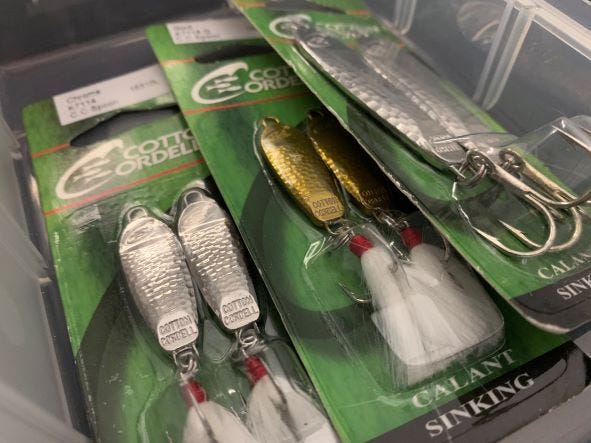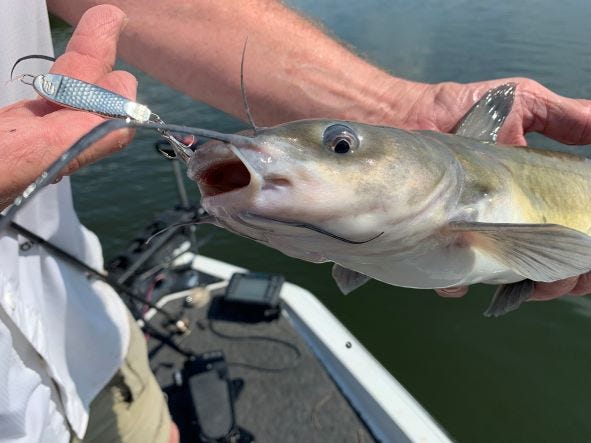- Oct 13, 2021
Jigging Spoons for fall fishing success
Fall time fishing can rival the feel-good times of the spring spawn if you know where to look and what to fish with!
By where to look I mean off the bank, and what to fish with I simply mean the jigging spoon!
This little piece of lead wrapped in chrome plating can lead to some epic times on the water when it is implored correctly, check out the rest of the blog to learn why and how!
- Choosing the right spoon and gear
Before you begin fishing a jigging spoon it’s best to learn a little about them and what gear is needed. The jigging spoons I consistently reach for are the Cotton Cordell CC Spoon, and the War Eagle Jigging Spoon. Both models are simple pieces of lead with chrome plating featuring a single treble hook on the rear of the lure. They operate by falling quickly and swaying back and forth with intense flash – which triggers some awesome bites! The CC Spoon comes in small sizes like ¼ and 3/8 as well as larger sizes like ¾. The War Eagle comes in ½ and 7/8 and is a better deep-water spoon - the CC works great for shallower depths or for targeting smaller species like crappie and white bass.
For gear I don’t like to get too technical because this a simple technique. I tend to use a 7-foot medium heavy casting rod and a fast-casting reel for all the sizes above 3/8 oz. because I’m generally targeting bass or striper that can pull hard. For the smaller sizes I go with a 7-foot medium heavy spinning rod to manage the light baits easier. The one thing I always stick with though is fluorocarbon line because you always want contact with the spoon and many bites come on the drop.


- How to fish a jigging spoon
Fishing a jigging spoon can be difficult to navigate at first but once you get the hang of it, it becomes second nature!
The best way I can tell someone to get good at making a jigging spoon move is to look at it in shallow water first. By this I mean drop the spoon in water where you can see it easily and play around with pops and slack line to make it shimmer and flash the most. This will give you an idea of what it is doing down deep.
Once you have an idea of the types of pops and amount of slack to give the spoon you are ready to try it out deep in some schools of fish, or over cover.
- Where to fish a jigging spoon
In the fall baitfish begin to make their migration into larger creek arms, so this gives an ample opportunity to try out a jigging spoon. Look for fish schooling and busting shad on the surface in the mouths of creeks or large pockets to begin the search. Scattered deep cover such as brush or standing timber can also be good strongholds.
Generally, I like to search for fish 15 feet and deeper to fish for with a jigging spoon because it loses effectiveness when shallower. This is because it’s usually a vertical technique and fish can pick up on the boat.
These tips should give you the ability to pick up a jigging spoon and find some fish this fall. Don’t be afraid to give this technique a shot anytime fish are schooled up, it works year-round!
You can find all the lures mentioned in this blog on Lurenet.com!





